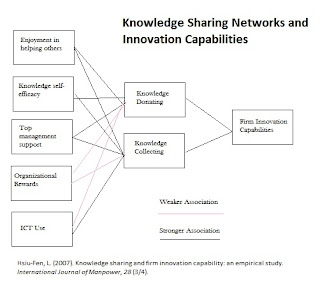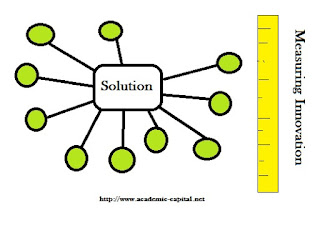Innovation is often a catalyst that spreads change and
adaptation through the industries it touches. Like a virus it moves from one
industry to the next helping to make the economic system stronger. Because
early adaptors of innovation create market advantages (Greve, 2009) such
strategic incorporations are sought, adjusted and capitalized on. Great ideas
create great interest and spread quickly even when new innovations are secreted
by the industries that develop them.
Most people understand the desire to understand and adopt
new innovations when they are beneficial but few understand what happens when
such innovations fail. Researchers know that such failure is important
knowledge because it can either contribute to the next great success or provide
key potholes to avoid when developing their own products or services. In either
case success and failure both have a beneficial impact on the development of
the economic market.
When failures are apparent organizations often try and hide
this failure. Such information provides insight into organizations approaches
and strategic thinking. Failed projects also indicate lost revenue and the
market capabilities of the firm. Yet even with no formal channel for innovative
failure announcements the informal channels are used to disseminate information
(Singh, 2005). What to do with that information is a key strategy an organization
can consider.
Henrich Greve (2011) investigates the innovative abilities
of the ferry industry in Singapore to shed additional light on how
disappointing innovations move within the local market. The work further helps
industry leaders to understand how some firms reject innovation failures and
some firms accept such failures to incorporate into their operations. After
review and study the report comes to the following conclusions:
-Diffusion processes are sensitive outcomes. The acceptance
or denials of innovations are based upon what it does for the firm.
-When innovation has a positive result the findings are
often kept secret to retard diffusion to other organizations.
-When innovation fails there is less incentive to hide such
information from competitors. However, organizations still attempt to hide such
information even though it leaks out through informal channels in the market.
-Theoretical models on risk-aversive decision making are
less accurate than models on decision-making uncertainty.
Analysis:
Failure and success are flip sides of the same coin. Even
when innovations fail organizations would do well to attempt to collect this
information in an effort to incorporate such findings within their own
innovative processes. At times such failures can lead to higher levels of
development and greater understanding at less cost to the researching
organizations. No matter how tightly an organization tries to keep both
successful and unsuccessful innovations secret the information will make its
way through informal networks and impact the market. Competitors actively seek
this information in order to incorporate and influence their markets for positive results.
Greve, H. (2011). Fast and expensive: the diffusion of a
disappointing innovation. Strategic
Management Journal, 32.
Greve, H. (2009). Bigger and safer: the diffusion of
competitive advantage. Strategic
Management Journal, 30 (1).
Singh, J. (2005). Collaborative networks as determinants of knowledge
diffusion patterns. Management Science, 51.

